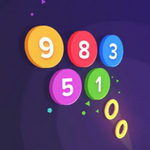
tetris Unblocked
## More Than Just Falling Blocks: Tetris' Enduring Legacy
Tetris. The name alone conjures up images of brightly colored blocks cascading down a screen, accompanied by a catchy, addictive soundtrack. But this deceptively simple game, born from the mind of a Russian programmer named Alexey Pajitnov in 1984, is far more than just a time-waster. Tetris' legacy is one of cultural impact, artistic inspiration, and a testament to the power of pure, elegant gameplay.
From Soviet Beginnings to Global Phenomenon:
Tetris' journey began in the USSR, where Pajitnov initially designed it for the Elektronika 60, a Soviet computer. It quickly spread through the underground computer scene, captivating users with its unique blend of challenge and simplicity. The game's popularity skyrocketed when it was ported to the Nintendo Game Boy in 1989, becoming a global phenomenon. Tetris' iconic gameplay, featuring seven distinct block shapes ("Tetrominoes") that need to be strategically placed to form complete horizontal lines, resonated with players across generations and cultures.
More Than Just Fun: The Psychological Depth of Tetris
The appeal of Tetris lies not just in its addictive gameplay, but also in its psychological depth. The game's simple premise and focus on strategic planning offer a sense of control amidst the chaotic descent of blocks. Tetris has been used as a tool for mindfulness and stress relief, helping players to focus and develop problem-solving skills.
Beyond the Pixels: Tetris' Influence on Art and Culture
Tetris' influence has extended beyond the realm of gaming. The game's iconic blocks and minimalist aesthetic have inspired countless artistic interpretations, from pixel art to abstract sculptures. Artists have explored the game's themes of order and chaos, pattern recognition, and the fleeting nature of time.
A Legacy That Continues:
Tetris continues to evolve, with new versions and spin-offs constantly appearing. From mobile apps to virtual reality experiences, the game remains a constant presence in the digital landscape.
Tetris' enduring appeal lies in its ability to transcend cultural boundaries and generations. It is a testament to the power of simple, elegant design, a reminder that even in the digital age, human connection and creativity can be found in the most unexpected places.
Ultimately, Tetris is more than just a game. It's a cultural touchstone, a testament to the power of human ingenuity, and a reminder that sometimes, the simplest ideas can be the most profound.













































